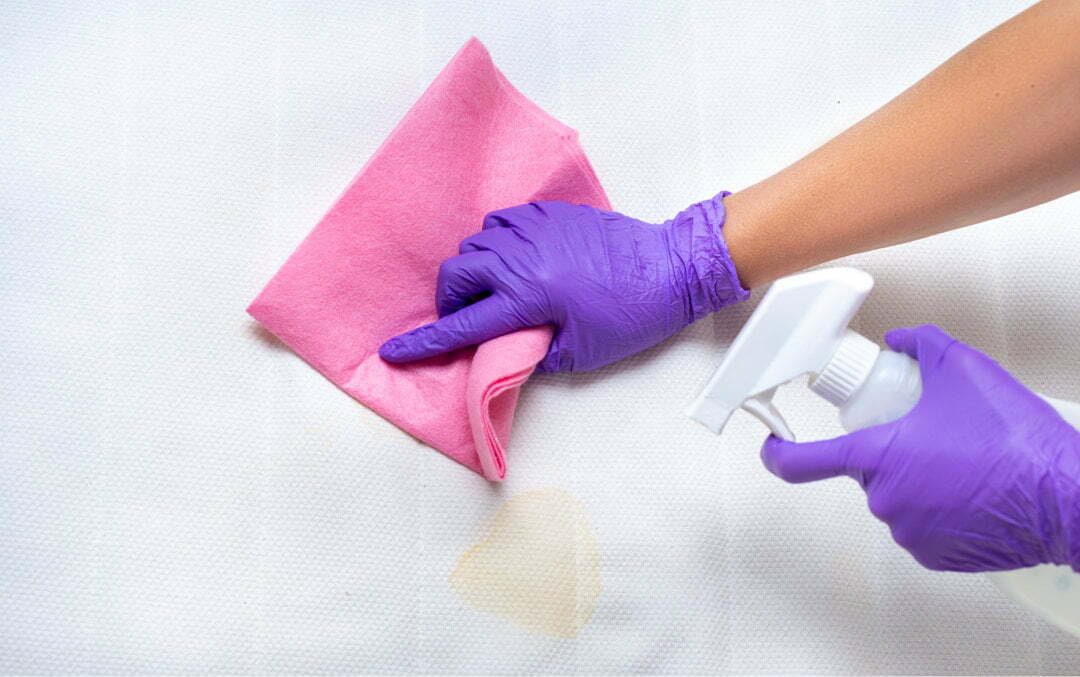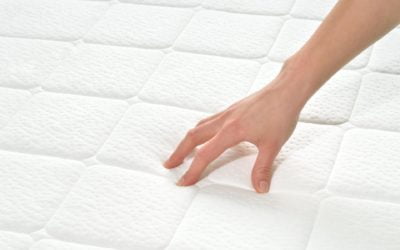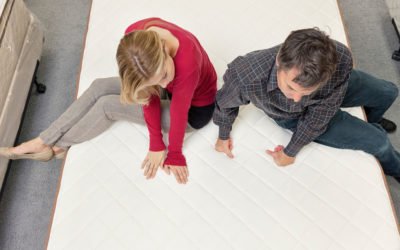Treating Mattress Stains
If an accident involving a mattress occurs immediate treatment helps enormously by preventing the liquid seeping into the upholstery filling, where it can cause problems.
If possible, after stripping off all bedding, stand the mattress on its side – this will help prevent the fluid penetrating the mattress. Sponge immediately with cold water – but don’t over water. Here are some recommended treatments for specific fluids:
How to clean urine out of a mattress
Sponge with warm solution of mild detergent or upholstery shampoo. Then wipe with cold water plus a few drops of antiseptic such as Milton.
Red wine
Blot with an old damp cloth then sprinkle the mattress with salt to help soak it up. Mix one-part white vinegar with two-part dishwashing soap.
Dampen a cloth with it and blot, then sprinkle with baking soda and leave for at least an hour.
Fruit juices
Use proprietary stain treatment – following instructions – or sponge with warm borax solution and then clear water. A strong coloured drink such as blackcurrant will probably leave a stain.
Chocolate and milk-based drinks
Treat as above and when dry use an aerosol grease solvent to clear grease – being particularly sparing if used on a foam mattress. Brush to clear deposit.
Blood
Use a proprietary stain remover, or upholstery cleaner, followed by cold water.
Oily marks
Use an aerosol grease solvent to draw stain out, rather than liquid grease solvents.
Vomit and diarrhoea
Scrape up as much solid matter as possible, without spreading the stain. Treat as for urine above.
If you want better sleep and a healthier home, keeping your mattress clean should be a top priority. Over time, mattresses accumulate dust, allergens, dead skin, and odors—all of which can affect your sleep quality and overall health. These mattress cleaning tips will keep your bed fresh and comfortable.
General Mattress Cleaning Tips
Step 1: Wash your bedding
Start by stripping all bedding from your mattress. Wash sheets, pillowcases, and blankets once a week using hot water to kill germs and bacteria. Duvets and quilts can be washed every few months.
Clean bedding keeps your sleeping environment hygienic and helps extend the life of your mattress.
Step 2: Vacuum the mattress
To remove dust, hair, and allergens, vacuum the entire surface of the mattress using an upholstery attachment. Pay special attention to seams, corners, and edges where debris tends to collect.
Vacuum your mattress once a month to maintain freshness and reduce the risk of allergies.
Step 3: Air out the mattress
If possible, place your mattress in direct sunlight for a few hours. Sunlight naturally kills bacteria, dust mites, and mold spores. If taking it outside isn’t an option, open your windows to let fresh air in and improve ventilation.
Regularly airing out your mattress helps eliminate moisture and odor.
Keeping your mattress clean doesn’t have to be complicated. With regular care, prompt attention to spills, and a few natural solutions, you can enjoy a fresher, more hygienic sleep space year-round.






0 Comments